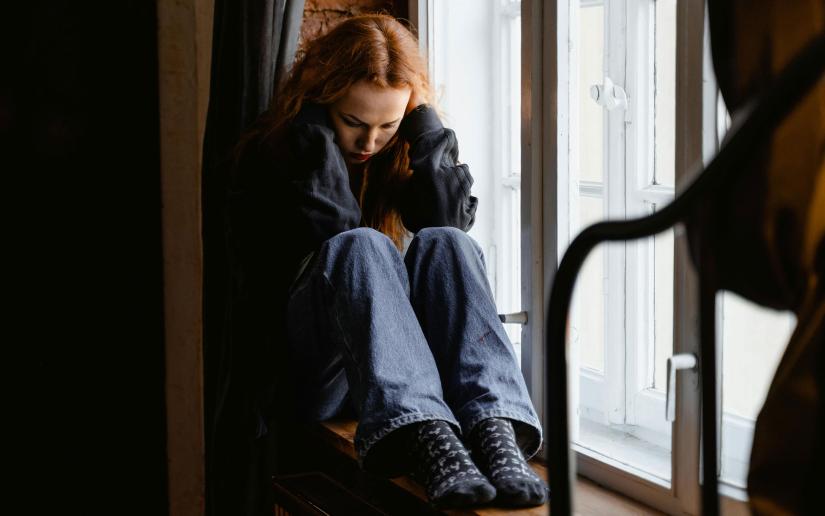Pain threshold is not the same as pain tolerance, which measures how much pain someone can endure before they require relief. Distinguishing between them is crucial, especially in research settings, write Joshua Pate and Tory Madden.

Picture: Mart Production/Pexels
We’ve all heard someone claim they have a “high pain threshold” as if it’s a mark of strength or resilience. But does science support the idea that some people genuinely feel less pain than others?
Pain is an experience shaped by our psychology and social context, with many variables.
In our interviews with children about their experiences of pain, many link pain to “toughness”. It seems that social expectations shape our understanding of pain from a young age.
There are also plenty of misconceptions about pain thresholds, which contribute to health-care inequities that affect millions of people.
What is (and isn’t) a pain threshold?
A pain threshold technically refers to the point at which an event – such as heat, cold, or pressure – becomes painful.
It’s not the same as pain tolerance, which measures how much pain someone can endure before they require relief.
While these two terms often become muddled in everyday language, they describe different facets of the pain experience. Distinguishing between them is crucial, especially in research settings.
How stable is a pain threshold?
The stability of a pain threshold is controversial, and probably depends on how it is tested. Certain techniques produce fairly consistent results.
But the pain threshold may be more of a “zone of uncertainty” than a fixed point of transition from non-painful to painful.
We have argued that how variable someone’s pain threshold is may, in future, provide valuable information that could help us understand their risk of chronic pain and the best treatment options for them.
Biological influences on pain thresholds
Pain thresholds are influenced by a variety of biological factors. For now, let’s explore genetics, hormones, and the nervous and immune systems.
Sex and gender differences
Men often have higher pain thresholds than women in experimental settings. This may be due to hormonal differences, such as the influence of testosterone.
On the other hand, gender-based differences in pain sensitivity could reflect social norms that demand more stoicism from men than from women.
The redhead question
Some research has found that people with red hair may experience pain differently, due to the MC1R (melanocortin-1 receptor) gene variant.
However the mechanisms underpinning this finding are not yet clear. For example, redheads may have a lower pain threshold for certain noxious threats, such as heat, but a higher threshold for others, like electricity. Overall, the evidence is far from settled.
The nervous system in chronic pain
Some people with long-lasting pain can have lower pain thresholds. This may be due to central sensitisation, where the nervous system appears to be on higher alert for potentially harmful events.
It’s not yet clear whether some people have lower pain thresholds before they develop chronic pain, or whether their thresholds drop later. However, the presence of central sensitisation may help clinicians to work out what treatments will work best.
The immune system and pain thresholds
The immune system can influence nerve signals and pain thresholds. Inflammation in the body, such as when you have a cold or the flu, can drop your pain threshold quite suddenly.
Many people experienced a short-lived version of inflammation-induced central sensitisation when they had COVID. Suddenly, the smallest things produced a headache or body pain.
An acute injury such as an ankle sprain also triggers inflammation that drops your pain threshold. One of the reasons why ice helps an ankle sprain is it controls inflammation at the injury site, allowing your threshold for pain to recover a little.
All of these biological influences (and more) are just the beginning of the pain threshold puzzle.
Psychological influences
Psychological factors such as anxiety, fear and worrying about pain are associated with lower pain thresholds.
On the flip side, strategies like mindfulness and relaxation may raise pain thresholds.
Social influences on pain thresholds
Cultural norms shape how we perceive and express pain. Some cultures encourage stoicism, while others normalise openly vocalising discomfort.
These norms influence how health-care providers interpret and treat pain, often leading to disparities. Researchers are now zooming out to identify these sorts of social influences on pain.
Implications for pain recovery
Understanding pain thresholds is not just an academic exercise; it has practical implications for health care. Misjudging someone’s pain can lead to inadequate treatment or the overuse of pain medications.
Research has shown women and people from minoritised groups are more likely to have their pain dismissed by health-care providers.
We need to better understand pain thresholds to enable tailored pain treatments. A whole-person perspective could shake up pain treatments and usher in a more supportive, helpful version of personalised health care.
From genetics to psychology to culture, pain is as diverse and complex as the people who experience it.
Joshua Pate, Senior Lecturer in Physiotherapy, University of Technology Sydney and Tory Madden, Associate Professor and Pain Researcher, University of Cape Town
This article is republished from The Conversation under a Creative Commons license. Read the original article.

